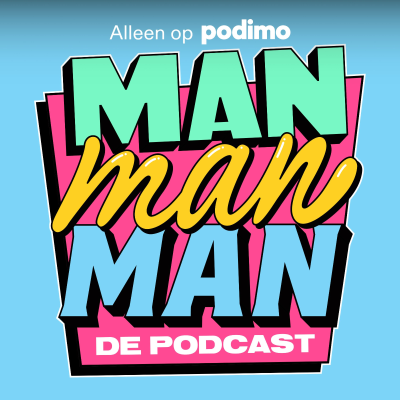
Raad
Engels
Technologie en Wetenschap
Tijdelijke aanbieding
3 maanden voor € 1
Daarna € 9,99 / maandElk moment opzegbaar.
- 20 uur luisterboeken / maand
- Podcasts die je alleen op Podimo hoort
- Gratis podcasts
Over Raad
Raad on philosophy, startups, and life. On Twitter @r44d. raad.substack.com
Alle afleveringen
23 afleveringenHow we found product market fit
A Conversation with Bryan Pham for the Asian Hustle Network podcast Bryan: At what point did you realize that you had product market fit and how did you advertise this product? Raad: It started out with my co founder and I knocking door to door with a square reader and going on Yelp. We started charging people $300 to join the platform and promising them clients, even though we had no ideahow we would get any. Then, we realized that actually getting lawyers to pay for your services is a harder problem to solve for. So it started off as this SaaS subscription model and we allowed lawyers to upload their real time availability. It was similar to a Zocdoc for lawyers where people with clients can go in, click a slot, get a consultation, get the lead and they would pay us in exchange for that. That wasn't really good at product market fit, It wasn't sustainable. We were going after so many different practice areas from divorce lawyers, to personal injury lawyers and we were spread too thin. Eventually we focused around startups and small businesses. We thought that we had product market fit at that time, but it really wasn't. Yet, it was enough for us to get the attention of 500 startups because we were growing. We were doing a few thousand dollars in revenue a month and it was picking up. In terms of social network and how we marketed, I utilized Quora which is a Q&A site to filter by all the legal questions that people were asking. I cracked open my old law school textbooks and began answering hundreds and thousands of them for free and I would link Lawtrades at the bottom for people to check it out. It resulted in a lot of people visiting the website. I would answer questions like should I incorporate as an LLC or a C Corp? I must have answered that in 50 different ways on the site, but it eventually drove some traffic back to the main homepage. What's cool about Quora is it also picks up with SEO. So if its a really popular question, people can type it on Google and then Quora will usually be the first answer there. So not only do you get Quora's traffic, you get Google SEO traffic as well. That jump started a lot of our early growth and a lot of our early users. Bryan: I know that you initially mentioned that you thought you had a product market fit, but what was a real Pivot that caused the product market fit? Raad: It's tricky because you can grow your company, get paying customers and just assume that you have product market fit. Fundamentally, if your underlying unit economics is not sustainable and your customers aren't constantly coming back to the platformusing it more and more, it becomes really hard and expensive to grow your product. You can be sort of tricked into thinking that you have product market fit, which is what happened to us. We were selling to startups and small businesses and eventually got into 500 startups, which invested around 125K at the time. Then, we eventually raised a seed round shortly after doing demo, which resulted in raising a little over 3 million dollars. It was led by a big VC fund, Draper Associates. At that point, we switched away from just posting on Quora because it wasn't scalable to continue running more ads on Google and Adwords. At a certain point, we were spending close to 100 grand a month on Google Ads. We were acquiring lots of customers and focused on growing the top line revenue in the business, even though we were actually losing a good amount of money. The problem with the early stage startup small business segmen, is the vast majority of them go out of business within the first year. If you think about when you're starting a company, the last thing you want to spend a lot of money on frequently is a lawyer. You're trying to hire for engineering, you're trying to market and spend money on a customer acquisition. When you're building a marketplace start up, if your demand side usage isn't predictable and recurring, then that doesn't provide a lot of incentive for your supply side to stay on board. So at this time we were losing lots of cash, but we're growing top line revenue. We were doing anywhere from 100 to 250k in monthly top line gross revenue. We knew we were going to raise a series A and we were going to figure out this losing of money thing later on. What ended up happening is we failed to raise our series A. At the time, we didn't know why, but then we realized that there was a competitor that came out that took our idea and raised around 70 million dollars. It just so happened that he was a famous founder named Justin Kan who launched his company called Atrium. He raised from every single VC that we spoke with and we realized why everybody stopped answering our calls. Justin had close to a billion dollar exit doing a legal tech company, so why would you trust a bunch of nobodies from Queens to be able to compete with him? This goes into the second phase of it, we were forced to get profitable. At that time, it was a travesty me and my co founder stopped taking salaries. We laid off 80% of our team, and we just had to get profitable.At this point we were all in on Lawtrades, failure wasn't an option. It was a blessing in disguise because it forced us to make this pivot into selling to our true product market fit, which is legal departments in bigger companies. We now work with companies like DoorDash, Pinterest, Opendoor and Angelist. We sell to the general counsels within those companies who have a daily legal need. It went from startups that might have an annual or quarterly legal need, to companies that use this every single hour because their legal teams are small, but their companies are growing and scaling. It seemed we were doomed for failure, but it all made sense. We rebuilt the product but we used pieces of it that worked for the small business side and tweaked it for more longer term enterprise level engagement. Finally it all clicked and our LTVs went from $1,000 to, basically close to a million dollars. We attracted an even better supply and the revenue was predictable. Then we kept getting more customers which attracted more supply and allowed us to become cash flow positive based off that pivot. Atrium and another competitor then ended up going out of business and we survived. A a couple of weeks ago, we raised our Series A. This is a public episode. If you would like to discuss this with other subscribers or get access to bonus episodes, visit raad.substack.com [https://raad.substack.com?utm_medium=podcast&utm_campaign=CTA_1]
Why I Got Fired from CVS
Kamrul: Raad, I'm just curious. Why did you get fired from CVS? Raad: There was one night where someone asked me to vacuum the aisle, and I think I was the youngest worker there and I just didn't want to vacuum it. It was supposed to be an every other day thing. And they were like, you have to. I was like, no, I'd rather just do anything else. They fired me the next day. They found some excuse. They were just like, oh, your cash register was short by 36 cents. I knew it was because I pushed back on doing something I genuinely didn't want to do. It was a common theme in my life where I just didn't like being told what to do. I'm a little bit of a free thinker and maybe that seeded the plants of not ever being able to hold a steady job since then, which leads into a bigger story. Kamrul: But you've never held a job? Raad: I have, but they were very short-lived. I wasn't very good at showing up at one place at a specific time and doing the same thing over and over again. I'm just not a very big morning person. Whenever I had to forcefully wake up, that would just dampen in my mood right then. I'm a curious person. So if I'm told to do something and I don't really understand the why behind it, I'm just not going to be naturally into it. I'm going to do it by force. I think I did that with a lot of my other jobs because I needed the money. But I knew it wasn't going to be long lasting because I'd rather be poor than do something that I'm not generally interested in. Before CVS I worked at Jones beach concession stand, I worked at a country club as a food server. Then I worked at a couple of law firms and luckily those were pretty short because they were while I was in law school, they were two or three months long. It was just enough to realize this has to end at some point. I needed to look at the writing on the wall. I just got into making stuff on the internet. Kamrul: Obviously you have this company and you manage people. How would you deal with someone like you? Someone that's a free thinker and maybe takes direction, but doesn't want to do exactly what they're told? Raad: I try to actively find those people. I'm not the best manager. The people that we hire and bring on have to be self-starters, and just be generally curious. I'm good with setting the stage and setting the vision and letting them know why this work is important and the impact they could have on the greater society. After that, it's really just up to them on how they perform. Money is a decent motivator, but if you're building anything early stage, you really need people to go away beyond just money being the main motivator. It needs to be something that comes from the heart. And that's the only way you're really going to succeed. When you're doing something really early stage, especially in the technology sector, and within law. There's been institutions around for hundreds of years, and you're this less than 10 year-old startup trying to disrupt it. You need people to go to the extreme. Extreme actions lead to extreme results. I try to actively find those people. It's very hard for us to hire because there's not too many of them out there. This is a public episode. If you would like to discuss this with other subscribers or get access to bonus episodes, visit raad.substack.com [https://raad.substack.com?utm_medium=podcast&utm_campaign=CTA_1]
Marketplaces Achieve Network Effects From Trust
EJ: Does this create any network effects, as you sell into lawyers? Obviously if they want to, they can go start their own practice and use Lawtrades. Do you see that happening? Raad: That's an interesting question. We've actually had people in both ways. We have had people on the supply side get hired by a company and become the GC there who then use Lawtrades to hire another team of remote freelancers. There's definitely network effects from a traditional platform perspective. The more talent and supply side you have, the faster matches the better experience and all of that. Even on the customer side it's a very referral driven industry. You're not going to be able to sell to general counsels via a LinkedIn ad or a cold email. That helps for little bit of brand awareness, but it really is word of mouth driven. So for us, getting a couple of customers and making them really happy and exceeding all of their expectations in terms of price, in terms of quality, in terms of product experience, and really blowing them away led to a lot of our growth because they went around and told all their friends- and their friends told their friends. That's why a lot of our focus is on community building through virtual events and in-person events. Not only is it fun to hang out with your customers and grab a drink with them, but it adds more fuel to the fire in terms of spreading via word of mouth. The same thing happens on the talent side. If somebody gets on the platform and they get hired and land an amazing gig- they tell their friends about it. LinkedIn is our main platform. So we see people posting about us from a talent perspective- This was amazing. It was life changing. And so much better than the traditional staffing model or so much better than working at a Big Law firm. People take note of that and then apply themselves. They'll often share different opportunities with their friends if it wasn't a fit for them. I think for these very vertical marketplaces, it really is important to provide an amazing experience for both sides because they're the ones that are going to drive most of your growth. It's not a SEO play. It's not an ad-words play. It really is just brick after brick- building community, gaining trust, and then giving them the tools to go out there and spread the word. This is a public episode. If you would like to discuss this with other subscribers or get access to bonus episodes, visit raad.substack.com [https://raad.substack.com?utm_medium=podcast&utm_campaign=CTA_1]
How Our Pivot Grew Revenue By 10x (But Almost Bankrupted Us)
At the end of 2019, Lawtrades’s bank balance was down to $20k. People were getting value from our platform, but we were struggling to convert that value into a healthy balance sheet. Investors were wary of our niche after Atrium shut down, so we had little choice but to go into survival mode—cutting 80% of our staff, and even, at one point, putting expenses on personal credit cards. Most companies in our position would have gone knocking on VCs’ doors, looking for capital to bridge the gap to profitability. But we felt we could preserve our equity, stay resourceful, and elbow-grease our way across the chasm. First, we pivoted, shifting focus from small-to-midsize businesses (SMBs) to hypergrowth tech startups. That brought its own slew of challenges, and a brush with bankruptcy that we narrowly avoided. But ultimately, we managed to hack our revenue, taking it from $70k/mo to $700k/mo. Here’s how we did it, step by step, and the lessons we learned along the way. Step 1: Fired 94% of our customers In the beginning, Lawtrades tried to serve every type of client. Mostly, this meant SMBs who couldn’t afford full-time legal teams. Unfortunately, it also meant: * High churn. SMBs generally needed one-off legal help, meaning limited repeat business. * High customer acquisition cost. The less repeat business we generated, the more prospects we had to nurture, hiking our customer acquisition cost. * High competition. Without a clearly defined niche, we were competing on more fronts than we could afford. Taking a cue from Peter Thiel, we realized that competition was for losers, and that the only way forward was through our most profitable customer segment: hypergrowth tech companies, often pre-IPO, whose general counsels (GCs) needed ongoing support. We fired everyone who didn’t fit that niche, and quickly became a go-to tool for companies like Cruise and DoorDash. Lesson #1: Riches are in niches. Step 2: Built a community Having identified our niche, we naturally started learning a lot about it. What problems did GCs commonly face? How did they solve them? What trends were impacting the space, and how could legal teams stay ahead of them? To collect our insights, we created a Substack newsletter, Forward GC. Over time, this led to: * Loyal customers. Customers learned to think of us not just as a marketplace platform, but as thought leaders in the niche. * More referrals. By solving one problem very well on a repeatable basis, we earned endorsements from prominent brands like DoorDash. * Lower customer acquisition cost. Word-of-mouth marketing is highly cost-effective—especially when it brings in repeat customers. Lesson #2: As Paul Graham said, “It’s better to make a few users love you than a lot ambivalent.” Step 3: Realized we had a cashflow problem The one great thing about serving SMBs was that they paid quickly. Our newer, larger customers often worked on 30-, 60-, even 90-day billing cycles. Given that we pay our lawyers every two weeks—Lawtrades is fundamentally about economic empowerment on the supply side—that meant our outflow outpaced our income. The more hypergrowth customers we attracted, the more we grew—and the faster we lost cash. This is where we got down to $20k, where my co-founder and I paused our salaries, and we where had to go into survival mode. Lesson #3: Don’t grow broke. It’s not always within your control, but avoid it if you possibly can. Step 4: Tried everything to improve our cashflow Desperate times called for desperate measures: * Working with shady lenders, some of whom wanted customers to pay them directly—both inconvenient and suspicious. * Quick business loans with outrageous interest rates, in some cases, as much as 10-20%—near-impossible to justify. * Putting expenses on personal credit cards, specifically mine, which prompted some (very) angry words with Amex. Each of these steps bought us some time, but never sustainably. We couldn’t keep borrowing badly, and Amex threatened to shut down my account Again, this is where a lot of companies would turn to VC. But we simply believed we didn’t have to—we had legitimate receivables, it was just that they were taking a long time to come in on companies’ billing cycles. Shouldn’t there be a way to leverage those receivables to get capital that would let us pay our supply side, and make it to our next growth stage? Just in the nick of time, we learned about a new debt option that let us do exactly that. Lesson #4: Before you default to VC, consider new debt options. As a founder, the most valuable optionality you have is the equity you haven’t sold, the dilution you haven’t taken. Step 5: Finally fixed cashflow By a stroke of luck, we learned about a company that provides upfront capital based on receivables. After a few conversations, Capchase agreed to take a chance on us, freeing us up to: * Pay marketplace users without waiting 30+ days. Lawyers on our platform got paid quickly for the work they did, without having to wait out long billing cycles. * 10x our revenue by using debt to acquire our next cohort of customers. With more cash on hand to spend on customer acquisition, receivables continued to grow. More receivables unlocked more debt, which allowed us to acquire more customers. And so on. * Revisit fundraising with a much higher valuation. Had we jumped at VC when times were tough, we probably could have raised at a $30-$40M valuation. But because we waited, we were able to revisit fundraising with an $80M valuation, ultimately raising $6M, diluting less than 10% equity. By this point, VC was a way to diversify our revenue streams, thereby de-risking our CapChase credit line. Lesson #5: Use VC for Research & Development—innovation—not as a Sales & Marketing or General & Administrative holdover. The level of effort and maneuvering it’s taken to turn our growth from a liability into an asset has been incredibly illuminating. For startups, it’s not as simple as finding customers or even finding the right customers. There’s an enormous level of nuance even within those objectives. We are often given the advice that “debt is bad.” We’re told to avoid it at all costs. But with the right partners and plan in place, debt is a powerful mechanism to grow without giving up equity. In our case, we had customers coming in and expenses under control—it was a cashflow problem. And debt solved it. This is a public episode. If you would like to discuss this with other subscribers or get access to bonus episodes, visit raad.substack.com [https://raad.substack.com?utm_medium=podcast&utm_campaign=CTA_1]
How I Validated My Startup Idea
EJ: I can think of how I might approach this. If I were in that position, I might try to go out and get large clients first then see if I could subcontract that work to some lawyers I knew. How did you approach validating this idea. Was was most important to validate: that lawyers would want to be entrepreneurial, or that clients would use a service like this? Raad: Because it's a marketplace, you're validating both of those needs. When you look at it from the side of an independent lawyer joining the platform, you want to validate if they can actually leverage this for a source of income. Are there real dollars that can be passed from this platform? There's been plenty of companies before that just did lead gen that would charge lawyers a subscription and sell them contact forms, then they would pay per contact and take it offline. I didn't want to build that kind of business. That's been done by the late ‘90s, early ‘00s directory websites. We started off in a pretty manual way. We used Square readers as a way to pass money back and forth before we built out a more automated payment platform. On the supply side, will they earn enough to stay on the platform? The demand side was the harder one. We pivoted through it a couple of times. We originally started selling to everyday people with all sorts of legal needs. Then we narrowed it down to small businesses and early-stage tech companies. Now we've found product market fit with scaling pre-IPO tech companies with an in-house legal team. For that, it was validating if they would use something like Lawtrades instead of a traditional BigLaw firm that’s been around for a 100+ years where they have deep connections and relationships. Will they actually try out something new? That's been a little bit of an uphill battle, but after Covid- most companies were forced to cut their legal budgets in half and hire remote workers. The pandemic actually helped accelerate our growth because it forced companies into considering us as a viable option. Since then, the growth has been snowballing. This is a public episode. If you would like to discuss this with other subscribers or get access to bonus episodes, visit raad.substack.com [https://raad.substack.com?utm_medium=podcast&utm_campaign=CTA_1]
Kies je abonnement
Tijdelijke aanbieding
Premium
20 uur aan luisterboeken
Podcasts die je alleen op Podimo hoort
Gratis podcasts
Elk moment opzegbaar
3 maanden voor € 1
Daarna € 9,99 / maand
Premium Plus
Onbeperkt luisterboeken
Podcasts die je alleen op Podimo hoort
Gratis podcasts
Elk moment opzegbaar
Probeer 30 dagen gratis
Daarna € 11,99 / maand
3 maanden voor € 1. Daarna € 9,99 / maand. Elk moment opzegbaar.

































